Faculty


Bio
As an undergraduate student at University of Washington-Seattle, working alongside Dr. Ake Lernmark deepened my interest in medical research. After graduating, I received a two-year medical research-training award at the NIH, where under Dr. Elise Kohn at NCI, I studied the signaling pathways and biological functions of granulin-epithelin precursor (GEP) in ovarian cancer. I completed my Ph.D. at the University of British Columbia in Dr. James D. Johnson's lab, focusing on the autocrine signaling mechanisms of insulin on β-cells. During my postdoctoral training with Dr. Ernesto Bernal-Mizrachi at the University of Michigan, I gained extensive experience in β-cell development, in vivo metabolic phenotyping of diabetes models, and understanding how adverse intrauterine environments (e.g., maternal low-protein and high-fat diets) affect health.
Our current lab at UMN aims to understand how early life exposure influences susceptibility to obesity and diabetes, which are underlying causes of cardiovascular disease and cancer. Our lab’s long-term goal is to break the cycle of diabetes through a multi-pronged research approach focused on prevention and cure.
Research Summary
Obesity and Diabetes are complex diseases that significantly impact many individuals and impose substantial costs on our society. As a team, our lab aims to understand how placental insufficiency induced by factors such as maternal obesity, inflammation, and diabetes affects offspring's beta-cell function and susceptibility to metabolic diseases. In particular, we investigate the roles of nutrient proteins like mTOR, AMPK, and OGT in beta-cell development, function, and regeneration using techniques ranging from epigenetics and biochemistry to in vivo phenotyping of glucose metabolism. Finally, I strive to provide an exceptional training and mentoring environment for my trainees, preparing them to achieve their full potential and tackle medical research challenges.
Research Interests
- Placental Biology
- Placental Inflammation
- Pancreatic Islet Biology
- Insulin Resistance, Obesity, Diabetes and Metabolism
Honors and Recognition
Contact
Address
3-142 CCRBCancer and Cardiovascular Research Building
Minneapolis, MN 55455-0001


Education
Honors and Recognition
Contact
Address
3-144 Jackson Hall321 Church St. SE
Minneapolis, MN 55455


Research Summary
My work focuses on the physiology and biophysics of skeletal muscle. The work focuses primarily on probing the interactions of actin and myosin and the role of the passive resistance provided by titin protein filaments. I am interested in the relationship between macromolecular structures and their physiological functions. I the intricate organization and interaction of macromolecules in skeletal muscles and in the eye provide model systems for the study of the coupling of form and function. It is our hope that this combination of mechanical and biochemical data will help us to relate better molecular level information to the physiological responses to biological tissues.
Education
Contact
Address
3-136 Jackson Hall321 Church St SE
Minneapolis, MN 55455


Research Summary
My laboratory is primarily interested in metabolic physiology, stress physiology and social determinants of health and aging. We developed a unique integrative approach to investigate the molecular physiology of obesity and chronic stress-related disease which combines behavioral and genetic models, metabolic, neuroendocrine and imaging techniques in living animals as well as sophisticated molecular and structural biology analyses of neuropeptides.
The major research topics include: 1) the functional role of Vgf-derived peptides in obesity and metabolism and their development as innovative drug targets for obesity-related disease; 2) autonomic nervous system regulation of white and brown adipocyte functions in obesity; 3) stress-induced cardiovascular and metabolic diseases; 4) social determinants of health, disease and aging.
Funding sources include: NIDDK, NIA, NHLBI and several Foundations
Contact
Address
3-139 CCRB2231 6th St SE,
Minneapolis, MN 55455


Research Summary
My lab seeks to develop a quantitative, system-level understanding of stress response pathways at multiple scales -- from individual cells to whole organisms. Much of our research focuses on cell stress responses mediated by the tumor suppressor protein p53. We have used long-term time-lapse imaging to show that p53 undergoes complex dynamics in response to different forms of DNA damage. For example, in response to DNA double-strand breaks p53 levels increase and decrease in oscillations of fixed amplitude, duration, and frequency. In contrast, in response to UV-induced DNA damage p53 levels increased in a single pulse with a duration and amplitude that increases with decreasing damage. We have identified the specific molecular mechanisms that regulate the distinct p53 dynamical modes. By using small molecule inhibitors to alter p53 dynamics, we can change the transcriptional program regulated by p53 and thereby control individual cell fates.
Our current work focuses on developing a more integrated, network-level view of the regulation and function of p53 dynamics in single cells. We focus on identifying the molecular details by which p53 dynamics regulate downstream damage response pathways, including those regulating cell cycle arrest, DNA repair, senescence, apoptosis, and metabolism. We aim to identify how specific p53 pulse characteristics (amplitude, duration, or frequency) encode information that is decoded at the promoters of transcriptional targets. We are also applying quantitative, single-cell approaches to identify novel modes of regulation between p53 and other important signaling pathways, including the MYC proto-oncogene network and MAPK signaling. By developing a more quantitative understanding of these important signaling pathways, we hope to not only increase our basic understanding of these signaling dynamics in regulating cell fate decisions, but also provide novel methods for chemotherapeutic manipulation of signaling dynamics to alter cell fate in cancers in which the pathways are deregulated.
Honors and Recognition
Contact
Address
CCRB 3-1362231 6th St SE
Minneapolis, MN 55455-0001



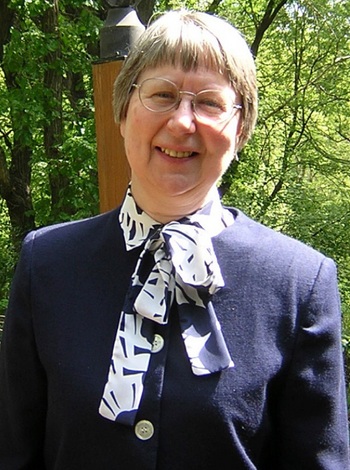
Research Summary
Our team studies how blood pressure and heart rate vary in response to stimuli in everyday life, for health surveillance and maintenance. We use timing according to rhythms (chronobiologic principles) for assessing cardiovascular health, and to detect pre-disease early, so that treatment administration schedules can be optimized to reduce the number of people dying of preventable heart attacks and strokes. We also explore how solar cycles and changes in the Earth's radiation environment affect human physiology as their impact has implications for long-term missions in space.Our extensive archives support research and education in chronobiology as it applies to various fields of medicine.
Contact
Address
715 Mayo420 Delaware St SE
Minneapolis, MN 55455


Bio
Dr. Kotz's training and background are in basic science obesity research. Her Ph.D. research was done in the area of neuropeptide regulation of feeding and energy expenditure, including effects on circulating hormones and enzymatic activity in white and brown adipose tissue. Cathy's post-doctoral research involved the role of orexin in body weight regulation and orexin's effects on learning and memory during aging.
Research Summary
Our laboratory focuses on brain sites and substrates mediating energy balance, in obesity prone and obesity-resistant animal models. The goal of our laboratory is to understand brain mechanisms important in determining the popensity for obesity. These investigations involve study of neuropeptides that regulate feeding behavior and energy expenditure, including that related to physical activity. Our most recent focus is on the role of orexin, also known as hypocretin. Orexin is a recently identified neuropeptide predominantly located in the lateral hypothalamus that enhances feeding and physical activity, and which also modifies sleep/wake patterns. Our laboratory has shown that orexin elevates non-volitional low-level activity, which has an important impact on body weight control. We have also shown that this low level activity may be important in maintaing obesity resistance during aging. The techniques we use include stereotaxic surgery, immunohistochemistry, food intake measurements, physical activity chamber measurements, indirect calorimetry, body composition (EchoNMR) radioimmunoassay and molecular biology procedures, including RNA/DNA extraction, northern blots, slot blots, rtPCR, cDNA probe synthesis, random primer labeling, hybridization, densitometry and microarrays.
Contact
Address
2231 6th Street SE3-144 CCRB
Minneapolis, MN 55455-0001


Bio
Dr. Keirstead received her Ph.D. in neurophysiology from Queen's University, Kingston, Canada, where she studied the role of neck muscle motoneurons and sensory afferents in the control of head movement in the laboratory of Dr. P. Ken Rose. As a post-doctoral fellow in the laboratories of Dr. M. Rasminsky and Dr. A.J. Aguayo at McGill University, Dr. Keirstead examined the capabilities of retinal neurons to regenerate axons and form functional synaptic connections with central nervous system neurons. Dr. Keirstead came to the University of Minnesota as a research associate in the Department of Physiology where she used calcium imaging techniques to study the regulation of intracellular calcium ion concentration in glial cells by neurotransmitters in the laboratory of Dr. Robert Miller. She continued these studies as an assistant professor in the Department of Ophthalmology.
Dr. Keirstead is an assistant professor in the Department of Integrative Biology and Physiology, and the Administrative Co-director and member of the Stem Cell Institute.
Research Summary
Current research interests include:
The functional characterization of stem cells at various stages of differentiation and their functional integration into host tissue after transplantation.
My research involves the use of calcium imaging and electrophysiological techniques to examine the functional characteristics of stem cells in vitro as they differentiate into cells of various tissue types. This system provides a useful model for the development of functional characteristics of neurons and other cells in culture. Furthermore, our functional studies will permit us to better define the optimum degree of differentiation for the successful integration of transplanted stem cells into target tissues of host animals.
Education
Contact
Address
2-2102001 SE 6th St.
Minneapolis, MN 55455


Research Summary
My research explores form and function relationships of the craniofacial complex during human growth and development and throughout primate evolutionary history. My current work is aimed at understanding variation in the coordinated growth and development of craniofacial structures associated with skeletal malocclusions and craniofacial anomalies.
Education
Contact
Address
Jach 6-129Minneapolis, MN 55455


Research Summary
My lab studies the role of mitochondria in generating, signaling, and responding to cellular stress, particularly in cardiac and skeletal muscle. In particular, we currently focus on how the dysregulation of mitochondrial calcium leads to physiological changes in mouse models. Mitochondrial calcium handling plays a critical role in energy production as well as cell death. To decipher the impact of calcium perturbation on multiple scales, our approaches span a variety of experimental techniques, from biochemical measurements on isolated mitochondria to live cell microscopy to in vivo phenotyping.
Education
Contact
Address
3-146, Cancer and Cardiovascular Research Building2231 6th Street SE
Minneapolis, MN 55455-0001


Bio
Joseph M. Metzger, Ph.D., is the Maurice Visscher Land-Grant Chair of Physiology and Professor and Head of Integrative Biology and Physiology at the University of Minnesota Medical School. The Metzger laboratory uses molecular and integrative biomedical approaches for mechanistic investigations of heart and skeletal muscle function, with the long-range goal of translating these findings to new therapies and treatments for acquired and inherited heart and muscle diseases.
Metzger Lab Mission Statement: We seek mechanistic insights into normal and diseased cardiac and skeletal muscle function. Our overarching goal is to translate basic science discoveries into potential therapeutic strategies to combat inherited and acquired forms of heart and muscle diseases. Lab projects embrace individuality, emphasize cooperation and collaboration, and encompass a standard of excellence to all that we do as individual researchers and as a laboratory. Our guiding principles are to treat others with respect and courtesy, to maintain the lab in a collegial, safe and professional environment, and to work each day to the fullest of our capabilities.
Metzger received a Bachelor's degree in Natural Science from Saint John's University, Collegeville, Minnesota (1980), a Master's degree in Biology and Exercise Physiology from Ball State University, Muncie, Indiana (1982), a Ph.D. degree in Biology/Physiology under the mentorship of Dr. Robert Fitts from Marquette University Milwaukee, Wisconsin (1985), and performed post doctoral studies with Dr. Richard Moss at the University of Wisconsin, Madison, Wisconsin (1991). His lab designed and implemented a cardiac muscle-cell system that allows the transfer of genes into heart cells in order to assess the impact of those genes on the production of force and motion, the major function of cardiac muscle cells. The approach has the advantage of shedding light on the primary role of a normal or mutated gene in an otherwise normal muscle cell.
Metzger's findings have been published in top peer journals including Nature, Science, Nature Medicine, the Journal of Clinical Investigation, and the Proceedings of the National Academy of Sciences. This research is funded by the National Institutes of Health (NIH), the American Heart Association, the Muscular Dystrophy Association, and the Federation to Eradicate Duchenne, and has opened the path to treatment for a variety of heart and muscle diseases.
Research Summary
We are a mechanistically driven biomedical research lab focused on the form and function of heart and skeletal muscle in health and disease. We use molecular and integrative biomedical approaches for mechanistic investigations of heart and skeletal muscle function, with the long-range goal of translating these findings to new therapies and treatments for acquired and inherited heart and muscle diseases.Integrative systems biology of cardiac and skeletal muscle function Gene therapy, Gene and Base Editing Synthetic chemistries as membrane stabilizers Transgenic models of heart and muscle diseases Molecular mechanisms of sarcomere function Human iPS cell cardiac and skeletal muscle
Education
Contact
Address
6-125 Jackson HallMinneapolis, MN 55455


Research Summary
Our laboratory focuses on G-protein coupled receptor (GPCR) signaling in the heart, with two main areas of emphasis.
1. Free fatty acid receptor 4 (Ffar4). Ffar4 is a G-protein coupled receptor for long chain fatty acids (Carbon chains 14-24) including omega-3 polyunsaturated fatty acids (omega 3-PUFAs). Clinically, omega 3-PUFAs improve outcomes in heart failure, but the mechanism is unclear. We previously demonstrated that eicosapentaenoic acid, or EPA an omega 3-PUFA, prevents heart failure in a mouse model but not through the traditional mechanism of membrane incorporation. Alternatively, we found that the cardioprotective effects of EPA might be mediated through Ffar4, an entirely novel molecular mechanism to explain the benefits of omega 3-PUFAs in the heart. Currently, our research is focused on understanding this novel role for Ffar4 as a cardioprotective nutrient sensor in the heart that responds to fatty acid composition to protect the heart from pathologic stress.
2. alpha 1-Adrenergic receptors (alpha 1-AR): alpha 1-ARs are receptors activated by the endogenous sympathetic catecholamines norepinephrine (produced in sympathetic nerve terminals) and epinephrine (produced in the adrenal gland). Clinically, alpha 1-ARs were originally used for the treatment of hypertension (HTN) and are currently used to treat benign prostatic hyperplasia (BPH). Clinical trials demonstrated that alpha 1-AR antagonists (doxazosin) worsened outcomes in patients with HTN, significantly increasing cardiac events and doubling the risk of heart failure. Our work has provided a mechanistic basis to explain the failure of alpha 1-blockers in patients with HTN, demonstrating that alpha 1-ARs in cardiac myocytes protect the heart from pathologic stress. Currently, our research is focused on understanding the molecular basis for the cardioprotective effects of alpha 1-ARs focusing on how differential subcellular compartmentalization of receptors affects their function. Further, based on our work on alpha 1-AR subcellular compartmentalization, we are developing a next-generation alpha 1-blocker for HTN without cardiac side-effects.
Education
Contact
Address
3-141 CCRB2231 6th Street SE
Minneapolis, MN 55455



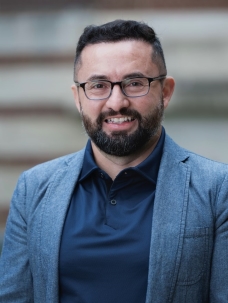
Bio
Dr. Revelo is an Associate Professor in the Department of Integrative Biology & Physiology and Center for Immunology. He has a broad background in physiology, immunology, and metabolism and expertise in inflammation during cardio-metabolic disease. His research explores the role of the immune system and inflammation in the pathophysiology of obesity-related diseases such as fatty liver disease and heart failure.
Research Summary
Dr. Revelo's research program focuses on the following areas:
1. Mechanisms of hepatic and intestinal inflammation in fatty liver disease and cancer.
2. Immune mechanisms of cardiac remodeling during heart failure
3. Anti-inflammatory mechanisms of exercise training and bariatric surgery
Education
Honors and Recognition
Contact
Address
2231 6th St SEMinneapolis, MN 55455-0001


Research Summary
My research is focused on the effects of microbial bioerosion on the cortical surfaces of post-mortem bone. My work is aimed at understanding the relationship between microbial modifications on the cortical surfaces of post-mortem bone and time of death, cause of death and post-mortem treatment of a corpse. My work is also being used to understand the manner in which bone is resorbed during osteolytic diseases, such as periodontits and multiple myeloma.
Contact
Address
321 Church St. SE6-129 Jackson Hall
Minneapolis, MN 55455


Bio
Dr. Ruan received his Ph.D. in Genetics from Nanjing University in 2008. He then did his postdoctoral training at Yale University School of Medicine from 2009 to 2015. In January 2016, he started his independent research lab at the Department of Integrative Biology & Physiology of University of Minnesota Medical School.
Research Summary
The research in my laboratory is directed towards understanding how environmental cues and intrinsic signals are integrated to regulate metabolic processes in health and disease. The Ruan laboratory currently conducts an integrated program in the following directions on tissue adaptation and remodeling upon metabolic stress: (1) protein O-GlcNAcylation in physiology and disease, (2) adipose Biology remodeling and energy balance, (3) intestinal epithelium at the interface between gut microbes and host physiology, and (4) immune homeostasis and its regulation of systemic metabolism. Using an integrative approach, we aim to define the pathological alterations of metabolic communication in diseases including obesity, diabetes, inflammation, and aging. Ultimately, we hope to identify targets and to design therapeutics for these diseases.
Education
Contact
Address
CCRB 3-143Minneapolis, MN 55455-0001
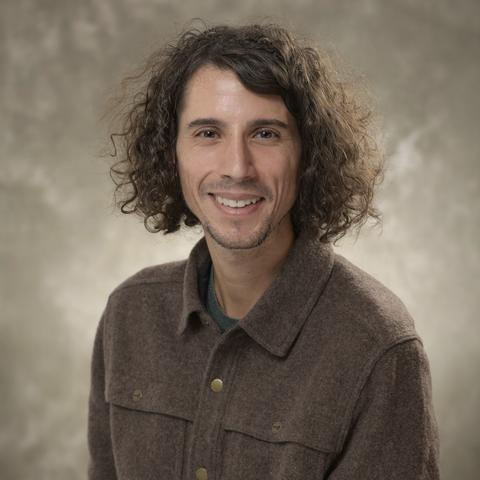
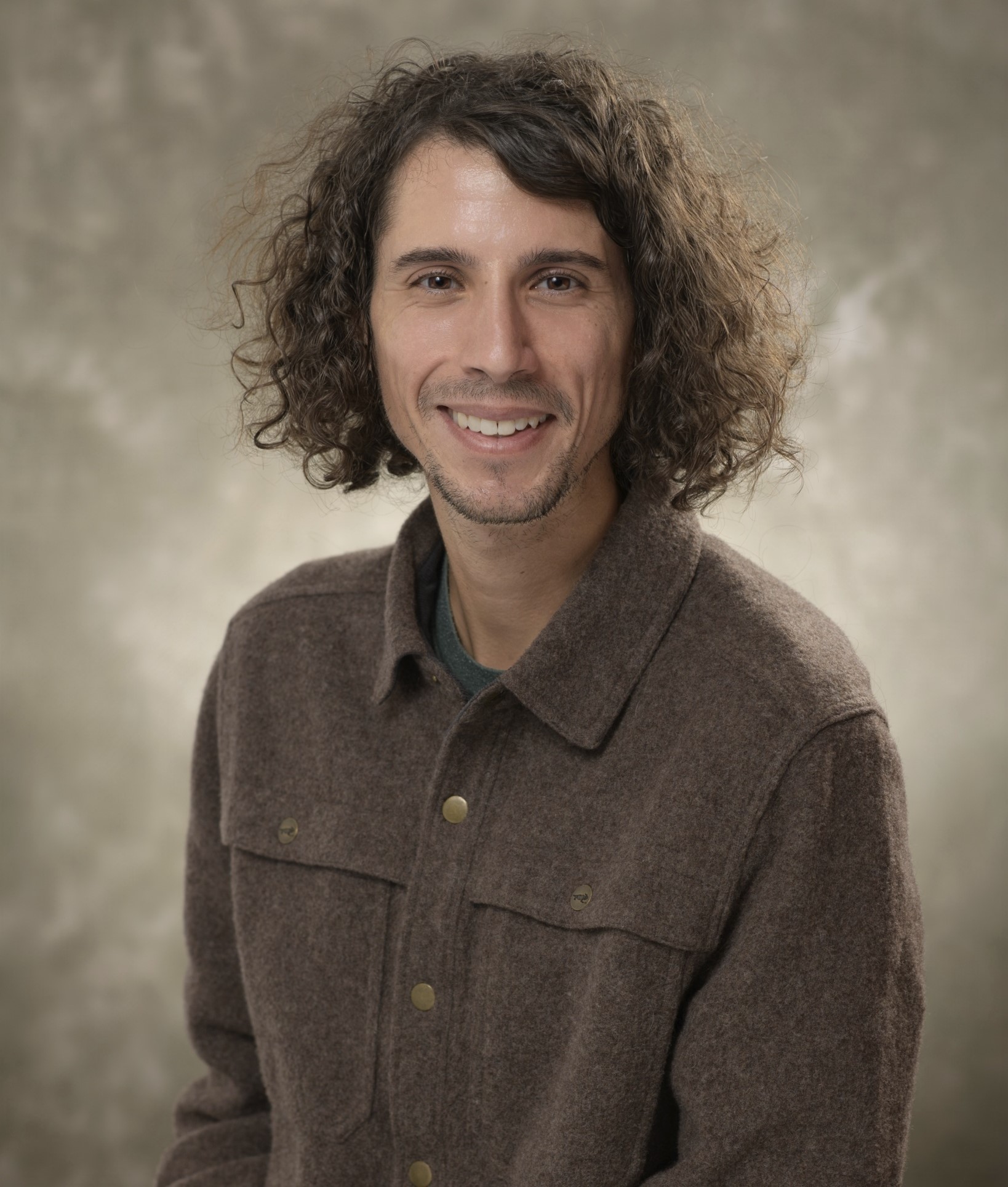


Research Summary
My laboratory focus on the development of consistent and accurate computational models to understand the fundamental forces that governs the biomolecular recognition process. These models serves as the platform for understanding binding selectivity and structure-based drug discovery. We work collaboratively with researchers across the University to develop novel cardiovascular, antiviral, antibacterial and anticancer therapies.
Education
Contact
Address
3-137 Cancer And Cardiovascular Research BuildingMinneapolis, MN 55455-0001

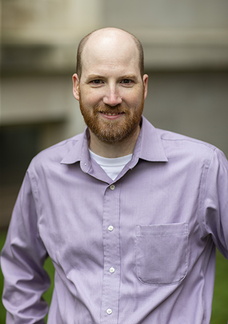
Research Summary
My laboratory utilizes an integrative approach to study the pathophysiological mechanisms of heart failure, with a specific focus on dystrophic cardiomyopathies. Patients with many forms of muscular dystrophy also have significant cardiac disease. Interestingly, several of the proteins associated with these dystrophic cardiomyopathies have also been implicated in heart failure resulting from more common causes (i.e., ischemic heart disease). Duchenne muscular dystrophy, the most common form of muscular dystrophy, is caused by mutations in the protein dystrophin. Dystrophin is a large protein that spans from the intracellular cytoskeletal actin lattice to a complex of glycoproteins in the sarcolemmal membrane, which in turn binds to the extracellular matrix. It functions both as a mechanical shock absorber and scaffold for a large array of signaling molecules. We study heart disease at varying levels of biological complexity including intact animals, isolated organs, and indivdual adult cardiomyocytes to obtain insights into disease mechanisms. We also probe molecular physiology, utilizing biochemical methodologies, transgenesis, and in vivo gene transfer. This highly integrated approach provides unique insights into the pathophysiology of heart disease and ultimately will enable us to develop novel therapeutic approaches.
Education
Contact
Address
3-140 CCRB2231 6th St. SE
Minneapolis, MN 55455


Research Summary
The role of glucokinase in insulin secretion from the pancreatic beta-cell - with applications to pregnancy and diabetes.The multiple mechanisms used by students to learn in the Anatomy lab, tools to facilitate the teaching of anatomy; and anatomy research and instruction for Industry.The development and production of plastinated human anatomical specimens that can supply public or private institutions for use in teaching and research.
Contact
Address
4-135C JacH321 Church St. SE
Minneapolis, MN 55455


Research Summary
My lab is interested in understanding the contribution of myeloid cells in the pathogenesis of metabolic and cardiovascular diseases, like atherosclerosis. We aim to determine mechanisms regulating the development and function of tissue-resident macrophages, as well as fate-decisions of circulating monocytes upon entry into inflamed tissues.
Education
Contact
Address
2101 6th St SEMinneapolis, MN 55455-3008


Research Summary
Novel mechanisms regulating cardiac myocyte contractility and survival in the heart.
Education
Contact
Address
321 Church St SEMinneapolis, MN 55455-0250